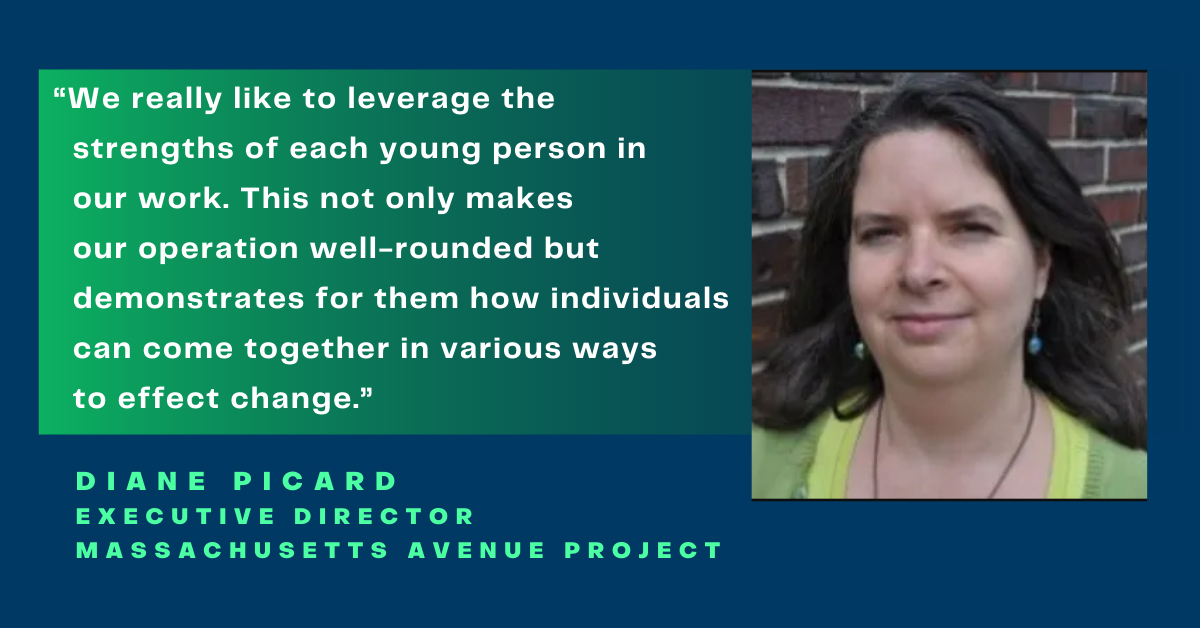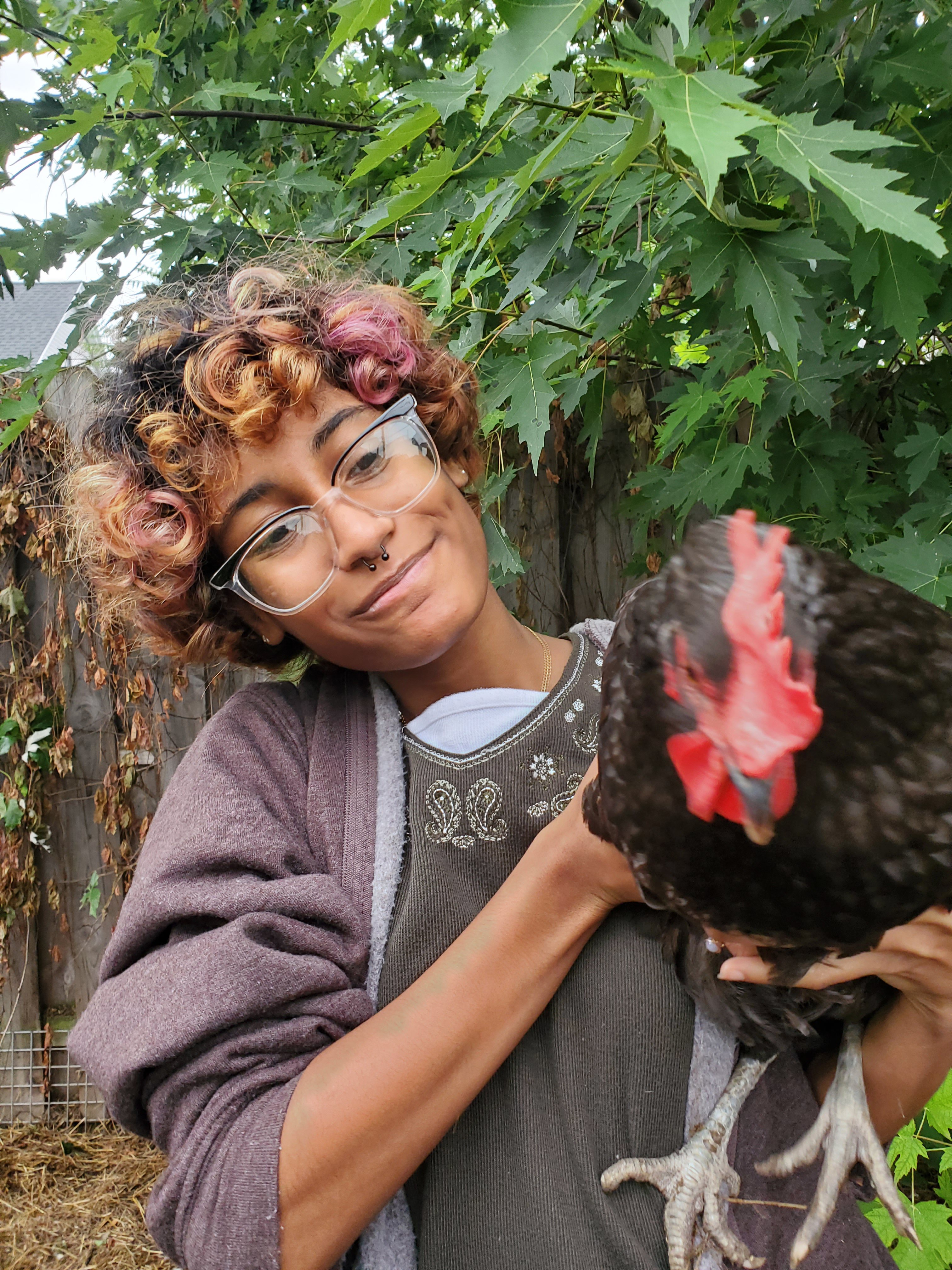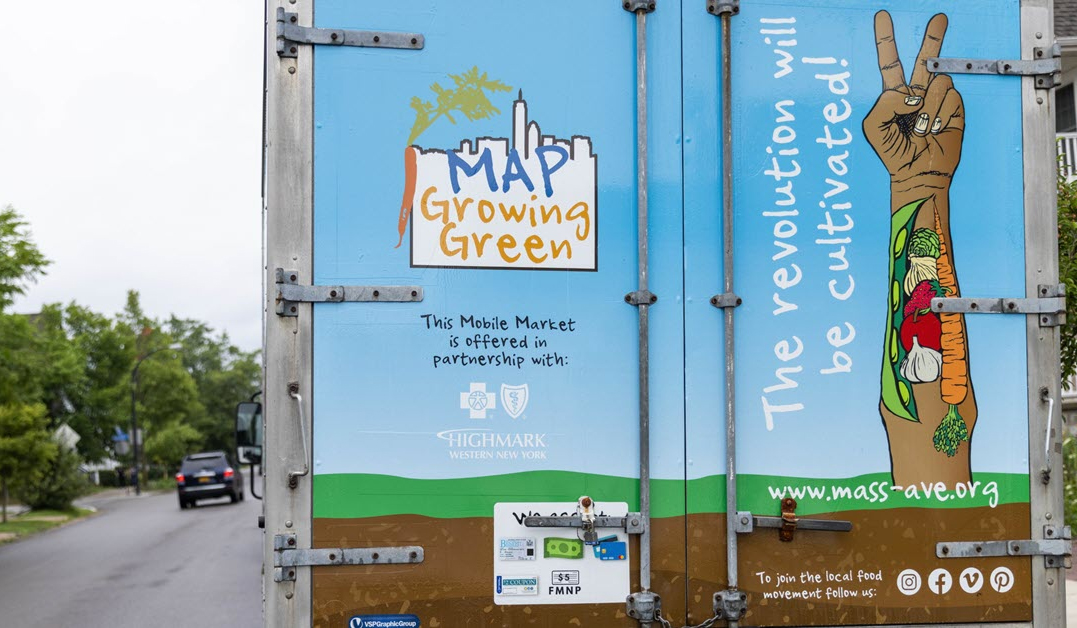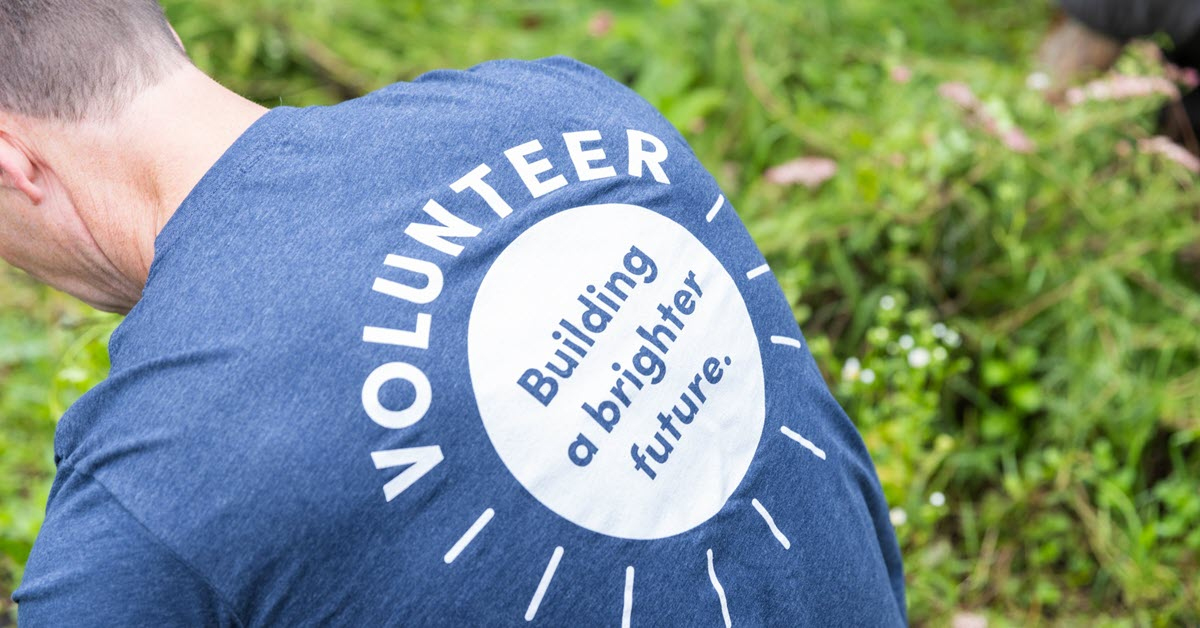Highmark Bright Blue Futures is the organization’s charitable giving and community involvement program. This series provides in-depth articles on its work, community partners, and leaders as they advance their goals around Community Health and Community and Economic Resilience. In this three-part article, we explore how the program and its community partners are addressing the challenges of food insecurity as part of their focus on supporting economic stability for individuals and families.

Partnering with community organizations to improve health and address inequities is an integral part of Highmark Health’s strategy. That is especially evident in the areas of social determinants of health and in the work done through the Highmark Bright Blue Futures charitable giving and community involvement program.
In part one of this three-part article, we looked at how that plays out when it comes to one of America’s most significant barriers to health: food insecurity. The community organizations featured in each part — Bright Spot Farm and Massachusetts Avenue Project — have different approaches, and address different facets of the issue, but they share the ultimate goal of a healthier, more resilient and equitable society for all.
Another common thread for these organizations, be they urban, rural, small or large, is that partnership and collaboration are critical to their success. Working with larger organizations like Highmark Health can expand available resources, influence and reach — and the benefits of these partnerships truly flow in both directions.
“Our support for Massachusetts Avenue Project and Soul Fire Farm aligns with our wider goal of increasing healthy food access for everyone,” says Mike Ball, vice president, Community Affairs, Highmark Western and Northeastern New York. “These are important organizations doing work on the ground to create healthier, more equitable communities.”
Massachusetts Avenue Project (MAP) is a nonprofit urban farm located on Buffalo's West Side. Support for MAP began with a 2019 Blue Fund grant aimed at expanding access to healthy food in Buffalo. MAP is a small oasis within the West Side of Buffalo that was started by community members in 1992 to meet the needs of their neighbors. With more than 45% of the local population below the poverty line, and more than 12% facing food insecurity, they knew there was hard work ahead. And then additional challenges hit.
“The COVID-19 pandemic and the closure of the East Buffalo Tops Supermarket after the May 14th shooting really exposed the food issues here in Buffalo,” says Diane Picard, executive director of Massachusetts Avenue Project. “But these are issues that have been here for such a long time.”
Food insecurity is particularly difficult in the city’s most underserved and primarily Black and Hispanic communities.
“If you look at Buffalo’s Black and Brown communities, you see a much higher rate of diet-related diseases,” Picard continues. “Since we know that access to healthy food makes a huge difference in people’s health, our goal has always been to focus on getting healthy food into those communities.”
Now in its fourth decade of work, MAP’s focus on providing equitable access to food has evolved into a multi-prong approach that includes mindfulness, education, and investment in supporting youths throughout the city.

Echo, one of the young people involved with MAP Youth
MAP’s Growing Green Program for youth was founded in 2003 to address issues seen daily in the Buffalo community: vacant land, youth unemployment, and food insecurity.
Like Bright Spot Farm, featured in part one of this article, MAP started its Growing Green Program to employ youth throughout the community in an environment of leadership and community service. Local teens, many from food insecure neighborhoods themselves, apply to participate in programs throughout the summer and after school and are invited to bring their unique talents to the organization.
“We really like to leverage the strengths of each young person in our work,” Picard says. “This not only makes our operation well-rounded but demonstrates for them how individuals can come together in various ways to effect change.”
This approach is clear in Growing Green’s work and participants. Participating youth learn about the social justice issues that impact food insecurity and are empowered to become changemakers in ways that work best for them. For instance, individuals who are strong speakers and presenters are introduced to policy work and working with systems to effect change. Students more interested in hands-on work can focus their talents on the MAP farm and community market, taking a face-to-face role in their community. Building a stairway of leadership for young citizens to engage in increasingly impactful work also creates a future population of community leaders.
“This is a big reason we work with youth,” Picard explains. “From initial participation to apprenticeships, to peer education and internships, these kids are educated about the food system around them and carry that awareness into the world as careful stewards of a more equitable future.”

The MAP Growing Green mobile unit improves access by taking food and other resources into the community.
As MAP has continued to expand its footprint, offerings, and activities, Picard notes that the focus is not only on food equity in Buffalo but also raising a wider awareness of the food system and food choices.
“We don’t just want to give people food. We want to change the way they think about food,” she says.
While youth were an initial and important focus, MAP has also expanded activities involving adults and families throughout the community. The completion of its Farmhouse and Community Training Center enables the group to host cooking and nutrition education classes, seminars, and modules that explore how food insecurity issues reach all aspects of Buffalo’s food system. With the addition of its mobile market, they are also taking offerings and awareness out to the community, helping to reach those who need it most.

Another way that Highmark Bright Blue Futures helps community organizations like MAP is by coordinating employee volunteering.
Picard credits partnerships for much of MAP’s growth and success.
“Partnerships are huge for us,” she explains. “We’re a relatively small nonprofit and we couldn’t do the work we do without them.”
Partnering with organizations like Highmark Blue Cross Blue Shield of Western New York helps with the funding needed to power its programming and reach. But it also goes beyond that — with the strength and reputation of large organizations in its corner, MAP has been able to work to shift policy and research toward a more diverse and equitable food system.
Picard adds that another important type of collaboration can be seen in MAP’s support of local entrepreneurs through a new commercial kitchen and its work with local coalitions like Greater Buffalo Urban Growers and Good Food Buffalo to explore how to build food equity together. For example, there is now a collaborative effort on planning urban agriculture programs for East Buffalo, a predominantly Black community that has been historically food insecure and was critically impacted by closure of its supermarket after the mass shooting in May 2022.
With an “act locally, think globally” mentality, MAP also works with Buffalo Public Schools and other large local institutions to move the focus toward more localized, sustainable practices in Buffalo’s food system.
With all that they do, Picard says that sometimes they see the impact of the work best in small, personal ways.
“There was a woman who came to our mobile market every week,” she says. “She had diabetes, and over the course of a summer, her numbers dropped greatly. She attributed it to all the vegetables she was eating and made a point to tell us that.”
For local organizations like MAP, and for larger multi-state initiatives like Highmark Bright Blue Futures as well, stories like that are powerful reminders of the “why” behind the “what” of our respective programs and activities, and inspiring examples of the impact we can make in individual lives.